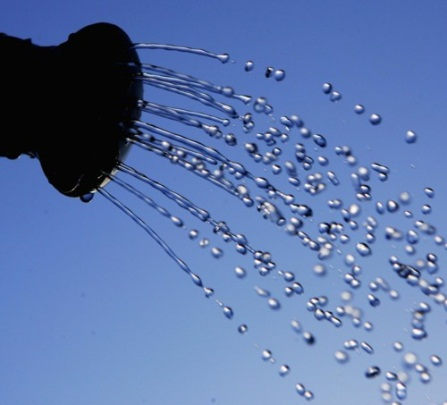Gardens Can't Survive Without Water
No matter what side of the global warming debate you fall on, the June temperatures contributed to a record-warm first half of the year and the warmest 12-month period the nation has experienced since recordkeeping began in 1895. July looks on track to continue that trend!
Soil is DRY and plants are thirsty. Don’t be lulled into complacency by your automatic irrigation system. With this much heat and humidity, the evaporation rates have skyrocketed meaning more of that watering is getting into the air than into the soil.
Okay, so FINALLY several towns got some rain. Many of you probably think, "Great, I'm off the hook!"
Not so fast. One rain event, especially after extreme heat, will not solve the issue. Much of this water will evaporate right into the dry air or run off the parched land. Multiple and regular rain events are needed to reverse the dry patch we are experiencing.
Here's the good news, by raining at the end of the day with the sun setting, the water has more of a chance to settle into the soil (where it didn't run off). If you watered before this event, your soil was primed to abosorb more water. If you water after the event, same - primed soil - more intake. So keep regular watering (multiple times a week for some extremely dry spots) on your to-do list.
HAND WATER
Understanding that most towns have some form of water ban in effect that needs to be respected, please do be mindful about how you water. Usually this means using a hand held hose and even maybe a watering can to reach plants in planters. For those living in towns with a full water ban, think of recycling clean water from household use.
GRAY WATER
While “gray-water” has lots of controversy surrounding it, it is a viable way to water. When you wash your dishes use environmentally safe dish soap, capture all your rinse water rather than the dirty wash water. That will have a low level of surfactant and be perfect to recycle into the landscape. Bath water, again with low levels of soap or salts, is totally fine to use in the landscape. The jury is still out on laundry water, but its use is accepted in some areas.
If you planted any annuals this summer, please water them often, maybe daily. Check the soil before you water. IF you have never watered them, since planting (and they aren't outright dead now), then water them TODAY. Please, don't make your plants suffer - they can't jump in the car and get a smoothie, they need YOU!
If you had a new installation of seed or sod, trees or shrubs, perennials or ground covers, these plants may need your attention. While irrigation systems are effective for maintaining regular soil moisture, they are NOT designed to manage drought. You must go out and look at your plants - check in with them - they'll communicate their need by their look. Are they wilting? Are the tips brown? Is the inside of the plant browning out? Then they may be thirsty.

GARDEN WATERING TIPS
Using a watering wand is a great way to deliver a steady stream of gentle water to your plants. Direct the water right at the base of the plant. You are watering the soil, not the plant directly.
Watch out for water run off! Make sure the water is soaking in. That means going slowly. You can scratch the surface of the ground with a cultivator to break up the crusty surface of soil or mulch.
Water a little, then go to the next plant, water a little, and move to the next, and so on. Then go back and do it again. When the soil is very dry it is difficult to get full absorption on the first pass. Going over areas 2 or 3 times will make a difference.

Don’t fertilize plants that are dehydrated. Just water until they look perky and lush again. Then it is safe to fertilize. This goes for lawns too. Doesn’t make a lot of sense to spend money fertilizing a dry lawn!
Don’t water in the heat of the day! Choose the morning – ideally before 9am – or evening – ideally after 5pm to water. Howevery, if you come across a totally sad plant, and it happens to be high noon. Get water to it - focus the water at the base - dig into the soil - get that water DEEP. Then put it on the regular rotation of watering.
Don’t just spray the leaves of the plants. Direct the water to the soil, not the foliage, especially on plants that are susceptible to fungus like roses, lilacs, peonies, phlox, and many annuals.
If you feel overwhelmed or unsure of how to deal with the summer heat and drought, please post your comment or question. Let's get a conversation going about watering and the frustrations of keeping up with the demands of the landscape - especially in this heat.
Want to make a change? The Garden Continuum can help you with organic soil building strategies, proper mulching techniques, right plant selections for your landscape, and watering systems that will help you beat the heat and ensure that your landscape investment thrives! Set up your Free Discovery Session today!






Leave a comment